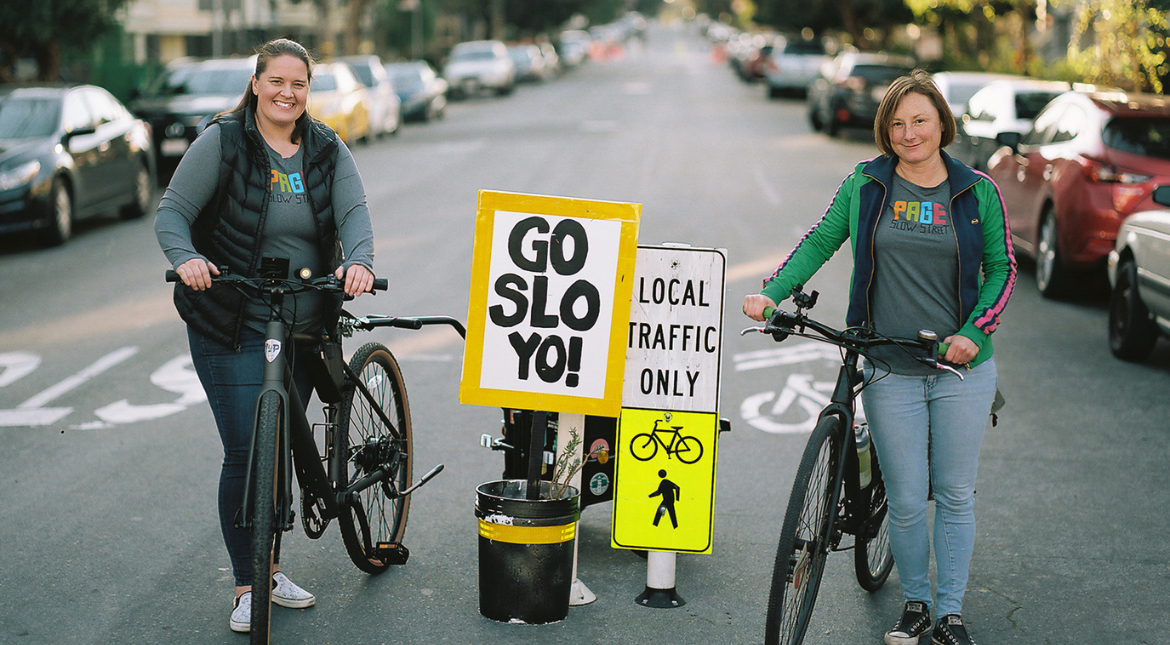There are a lot of street types in San Francisco’s city limits, including freeways, promenades, slow streets, arterials, and alleys. The rules guiding behavior on each are clear and understood for the most part, but ‘neighborways’ often confuse users.
The SF Municipal Transportation Agency (SFMTA) defines neighborways as “…residential streets designed to give priority for people, young and old, to walk and bike”, aiming to tailor street designs to each neighborhood. So, a neighborway is a street that doesn’t give vehicular traffic priority. But how is that different to a promenade or a slow street?
A promenade restricts vehicular traffic altogether, like JFK Promenade, or the Great Highway on weekends and holidays, while a slow street, like Page Street in the Haight, allows vehicle access but discourages and redirects cut through traffic, prioritizing active transportation, like walking or biking, instead.
Neighborways on the other hand, allow, but deprioritize traffic. They do not try to discourage vehicular traffic, but instead aim to calm traffic using tools like speed bumps, pedestrian islands, and bicycle ‘sharrows’.
The other big difference is users on foot are encouraged to use the roadway on promenades and slow streets; however, on neighborways, pedestrians are not allowed to walk in the street.
| Can cars drive there? | Can pedestrians walk in the roadway? | |
|---|---|---|
| Promenade | NO only emergency and service vehicles | YES |
| Slow Street | YES but discouraged | YES but must give way to traffic |
| Neighborway | YES but calmed | NO |
Curious to see neighborways in action? The most extensive plan for a network of neighborways in San Francisco is in the Sunset District (map), due to be implemented in 2023. Plans are also being developed to incorporate neighborways into the roadway redesign at Lake Merced, with construction due to begin in Spring 2023 (map insert).

